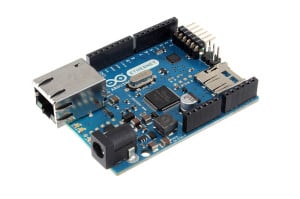WordPress and the Internet of Things
 This blog post has been adapted from Tomás Puig’s WordCamp Phoenix Presentation.
This blog post has been adapted from Tomás Puig’s WordCamp Phoenix Presentation.
There has been a lot of talk about the Internet of Things (or IoT) lately. With news like Google’s recent purchases of Nest, Boston Dynamics, and Deep Mind, it seems that we’ll be hearing a lot more about the IoT over the next few years.
But what is exactly is the Internet of Things, and what is driving the trend towards interconnected devices?
This post will look into both of those questions, as well as considering what the IoT means for content managers and the WordPress community.
Where Are We Going?
To introduce the interconnected device landscape, let’s take a look at where we’re going.
Very few people live in a single device world anymore. For example, between July 2012 and January 2013 and in an average week, 79% of consumers accessing the internet used a computer, 43.5% used a mobile phone, and 17% used a tablet (Media Behaviour Institute, 2013).
The days of audience viewing content on the desktop computer are dying. In May 2012, mobile internet traffic surpassed desktop internet usage in India.
You need to support 156 device models in order to reach 80% of the current mobile device market, according to Flurry Analytics.
According to Cisco, there will be about 15 billion devices connected by 2015, and around 40 billion by 2020. By 2020 nodes/sensors will account for the majority (60%) of the total installed base of IoE (Internet of Everything) devices (ABI).
That means 16 BILLION devices will need content in 2020.
What is the Internet of Things (IoT) Anyway?
Kevin Ashton, a RFID (Radio Frequency Identification) expert, first used the term “internet of things” in 1999. As explained by Jon Collins from GigaOM Pro:
The internet of things is not a single technology trend. Rather, it is a way of thinking about how the physical world at large and the objects, devices, and structures within it are becoming increasingly interconnected.
– The Internet of Things: A Market Landscape, by Jon Collins, GigaOM Pro
Some demonstrative use cases for the Internet of Things include:
- Cows that are equipped with pay-as-you-go devices that can send SMS when they are in heat.
- Smart fridges that can tell you when you’re almost out of milk. However, they’re not without risk. One smart fridge got hacked and turned into an email spam machine.
- Startups are creating monitoring devices that can be connected to many things like light bulbs, garage doors, and windows. Some monitoring devices can even be simply left in the basement to check for water leaks (GigaOM).
- “Things” don’t necessarily have to be small: Buses, trains, and cars can be fit with monitoring devices, so they can provide accurate information to both control rooms and customers (GigaOM).
- Our very own Tomás Puig himself used an Arduino with a wifi shield, connected to a sensor on his dog’s feeding bowl, to monitor whether or not his dog was being fed by his dog sitter while he was away. (So if Tomás ever asks you to look after his dog, just remember he might be monitoring you!)
WordPress and the Internet of Things
As most readers already know, ⅓ of adult Internet users know about WordPress. This makes it the largest content management system (CMS) on the Internet with a codebase that is controlled by its users.
WordPress is gradually becoming an application framework. Connection services like MongoDB and Sensor Monkey are making APIs (Application Programming Interfaces) for delivering data. WebDevStudios has also made AutoPhotobook, a 3rd party Facebook Application that lives on Facebook.com, but is built with WordPress.
Running Group Example
WordPress, through its plugin framework, is the best positioned to be the system of record for showing data from connected devices. One example of this is the Nike+ WordPress Plugin (not an official Nike plugin) that can be used to integrate statistics collected from wearable Nike+ Fuelband devices into the WordPress environment.
An individual runner might use the Nike+ plugin to record their training and race data. Even better, a group of runners might set up a team blog to share their training stats and spur each other on.
Members of the running group could also wear a Google Glass during race events, to take photos and videos of the event. This content could be delivered to the team blog using the wpForGlass plugin.
What you end up with is a shared running group WordPress site that is rich with data and content collected from Internet of Things devices. Pretty neat huh?!
Can you think of other examples of how the Internet of Things and WordPress can intersect?

I really appreciated Tomas’ presentation. I have shared it with some of our team members when IoT has come up in conversation. It was also nice to Meet Tomas and some of the other team members at WordCamp Phoenix.
Thanks for your feedback Anthony. I agree, Tomas did a great job at getting us all thinking about IoT.
The team enjoyed meeting you in Phoenix too!
Kirby